If you need to know how to find an escaped Ball Python, you’ll have to get to grips with their psychology. Keep reading to find out more…
Behind their chubby, slow-moving façade, Ball Pythons are in fact pretty good escapes artists. On the occasion where you leave even the smallest opening for them to get through, they will find it. Fortunately, they don’t go far. You just need to know how they think and you can track one down.
Are Ball Pythons good at escaping?
Yes, these snakes are great at escaping. Not because of any outstanding athletic ability – or even a half decent IQ, though.
They’re great at it because they are methodical and very patient. If your Ball Python can smell food or a potential mate in the area, it will spend all night prodding every square inch of its enclosure looking for a way out.
If there’s even the tiniest gap, it’ll find, just through persistence alone. Admittedly, this surprises a lot of owners because they look so fat and lazy during the day. With reptiles, however, looks can be deceiving.
That said, we need to remember one thing: escapes are almost always due to human error. I’ll be the first to admit that I have had two Ball Pythons escape, and each time it was because I left their enclosure open.
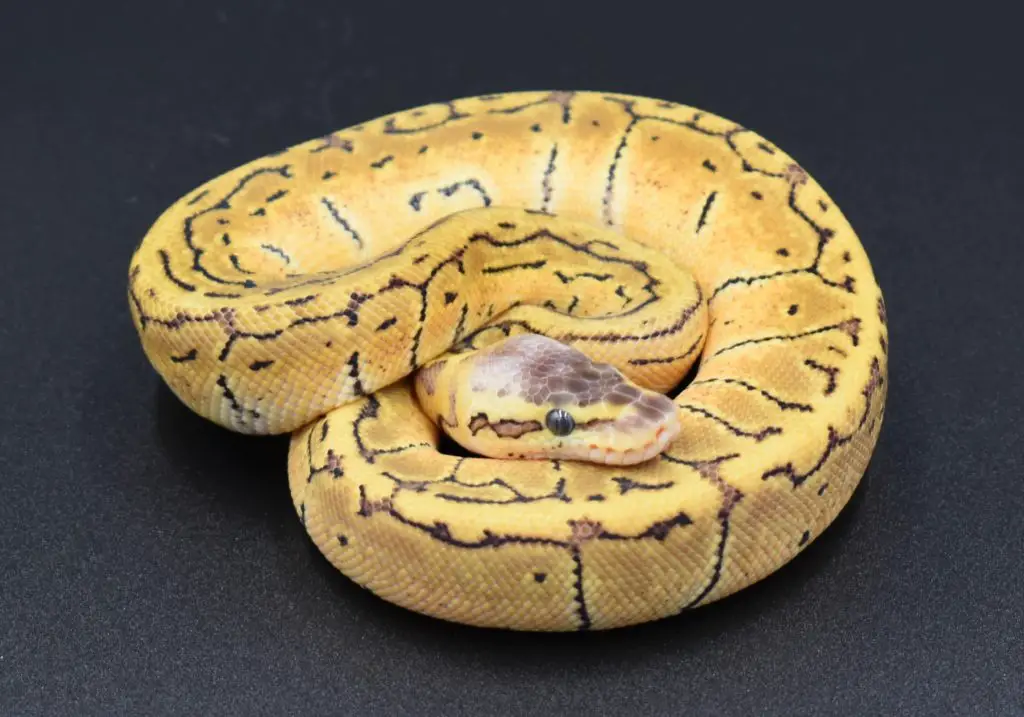
Things to remember before you start looking…
So, maybe your snake’s escaped and you’re in panic mode right now. Fortunately, there’s no rush! Let’s cover a few important starting steps first, then get into how to find your Ball Python.
1. This is the most important thing to remember before going on your quest. Don’t rush – or panic! Be as slow and methodical as your pet was when trying to escape. The last thing you want is to rush and miss where your snake is hiding.
2. If your pet is likely to meet any humans – let them know. Family members or anyone else likely to be in your home should be aware. This is for the snake’s safety more than anything else.
3. Be careful moving objects. More often than not, your snake will be behind or under something. The last thing you want to do is shift a piece of furniture and injure it.
4. Know when to get your parents or outside help involved. Is your snake in the back of your oven, or wrapped around some seriously shoddy wiring in the garage? Time to call in for some help!
5. Think outside the box. Your snake might not be behind a piece of furniture – but it could have found a way into it! I once found a lost Ball Python in my kitchen cupboard.
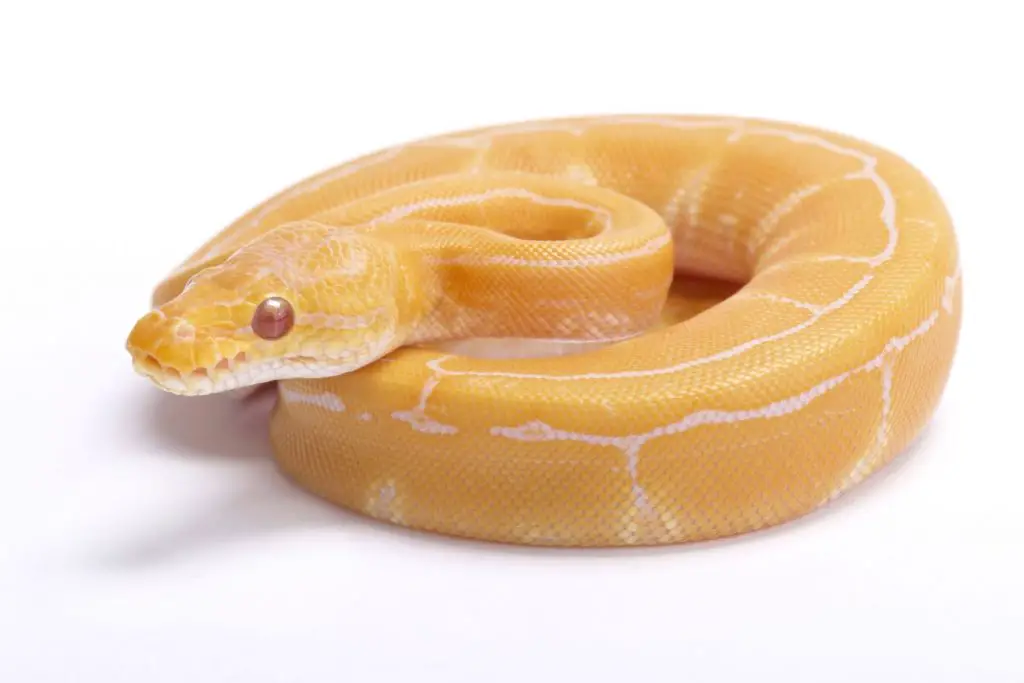
How to find lost python
There are several popular methods for finding a lost snake, and you can read about them all over the internet. Notwithstanding, Ball Pythons are particularly predictable, and I find the psychology method to be the most effective.
1. The psychology method
As you can see from the photos in this post, Ball Pythons are slow, thoughtful creatures that make decisions during the course of their escapes. They constantly look for safety, and sooner or later – they chicken out.
At the “chickening out point” they get worried about thermoregulation or safety and decide to hide as well as they possibly can. This means gravitating towards the darkest, snuggest place within sight.
That’s what makes this method so simple but so good!
To use the psychology method, you stand by your snake’s now vacant enclosure and look for the route to the nearest hiding place from there.
Check that hiding place, then move on to the next hiding place within sight of that one, and so on. If your snake isn’t in the room, move to the adjacent room and start again.
In many cases, you will find that the snake is hiding in the closest dark place within sight of its enclosure. Nonetheless, if the enclosure is up high, they will occasionally climb onto shelves, so don’t forget to check behind anything on those.
9 times out of 10 this method works. Just be systemic and slow about it – check everywhere whilst imaging what choices your pet would make.
To show you how the Ball Python psychology works, I let my Pastel Clown, Ruben, “escape”. Take a look at the photos below…
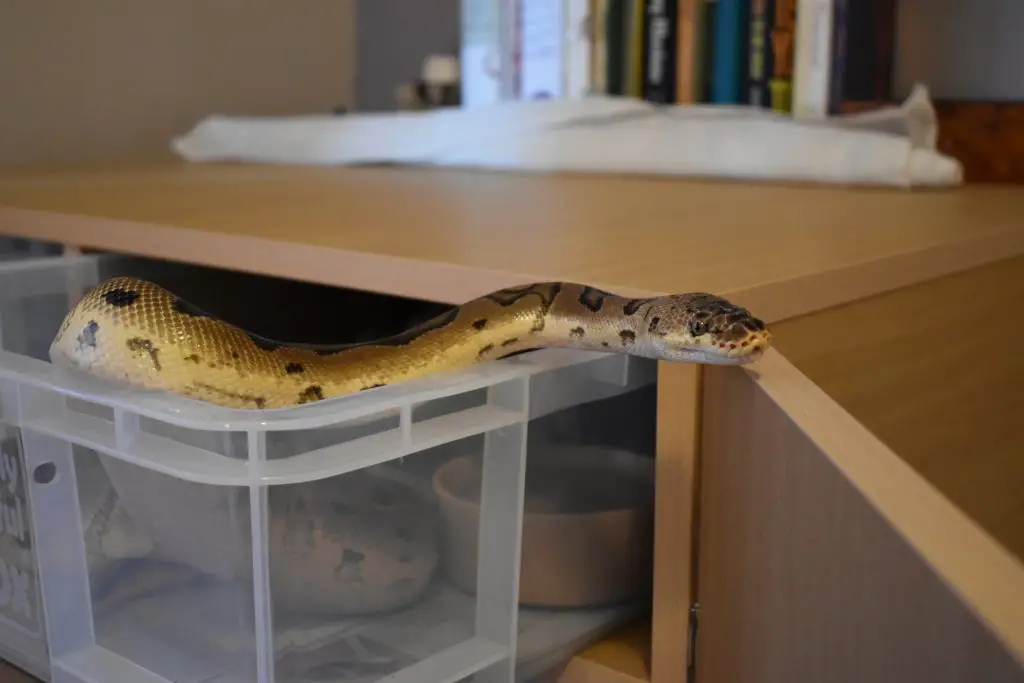
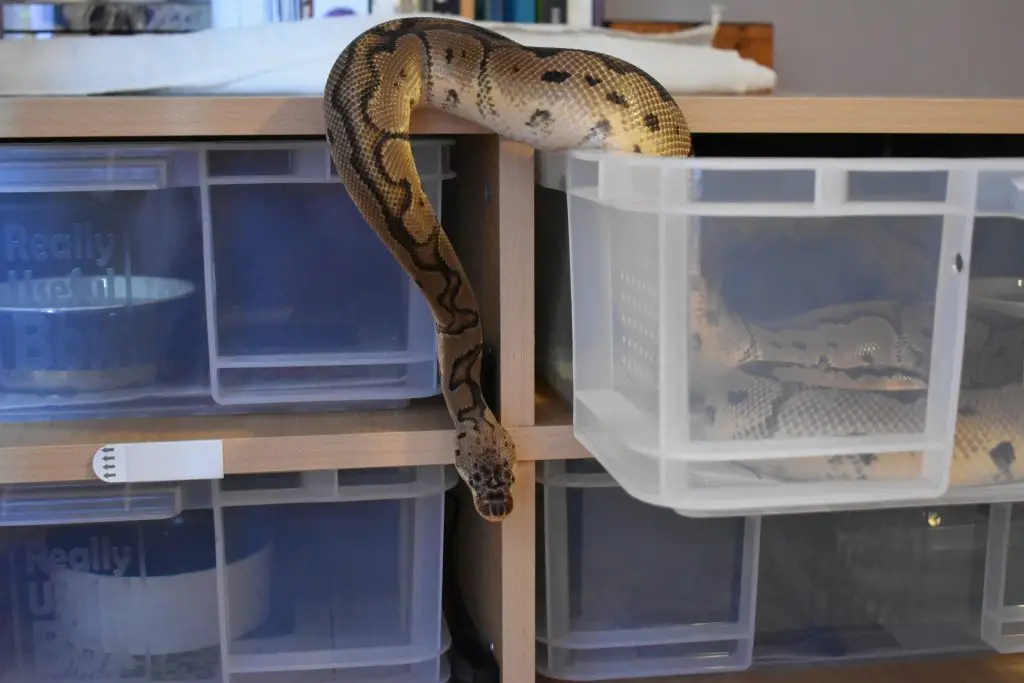
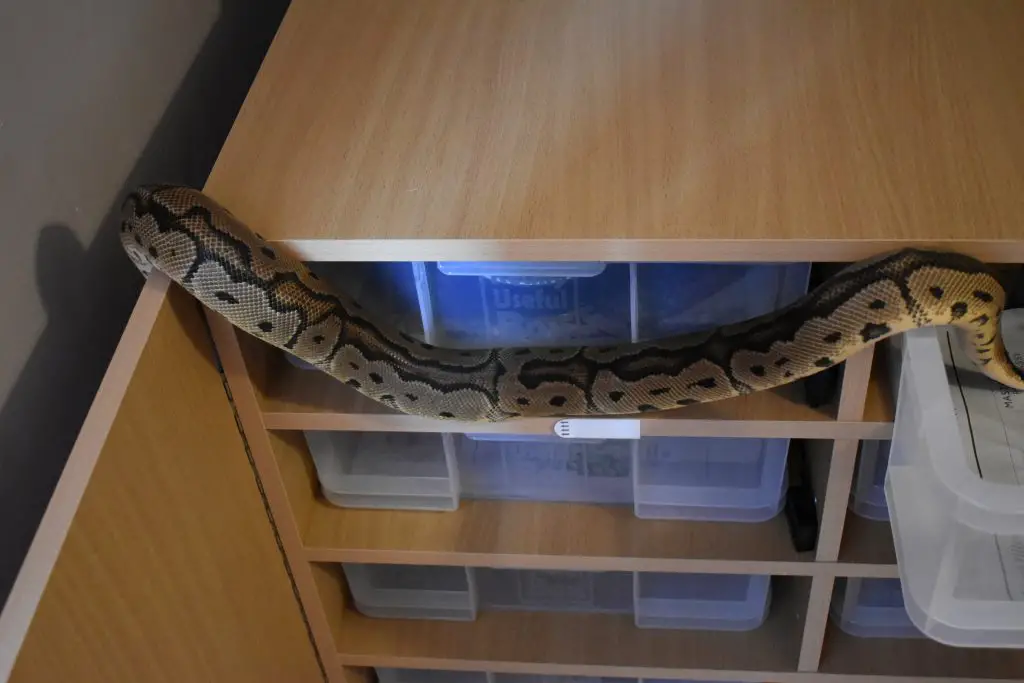
2. Identifying warm areas
If the psychology method didn’t work for you, the chances are your snake has found a really, really good hiding place. At the same time, the hunt might be dragging into the next day or even week by now.
Funnily enough, that might actually work in your favour. During the initial escape, Ball Pythons usually go for the nearest hiding spot.
After a while, though, they will start trying to get back into their regular habits, and this includes thermoregulation. At this point, they’ll start looking for somewhere warm to spend the day.
The best action now is to check all hiding places near sources of warmth. These could be
- Near radiators
- Near vents
- Under hot water pipes
- In the housing around your furnace
- In the garage (during summer)
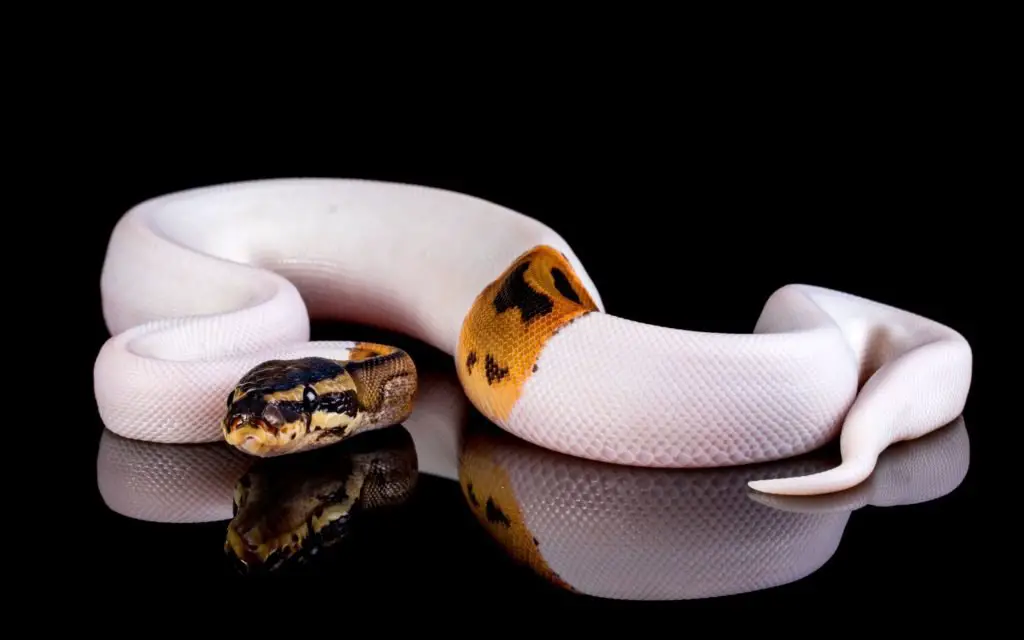
3. Traps
Why are traps last on my list? Because they don’t always work.
Many of the traps we see described in articles like this one are pretty unrealistic. One that comes to mind is leaving the enclosure open, either in its usual place or on the floor.
By all means try everything, but that one has never worked for me (including with King Snakes and Garter Snakes when I was a kid).
Another one that I have never ever known to work is the so-called heat trap, which involves cooling your house down and leaving a warm hiding place, like a box with a heat mat inside in the room where the snake got out.
Admittedly, I haven’t tried a lot of traps, and you should try everything! What I will say though, is that the only trap I have been told is effective is the talc trap.
This involves sprinkling talc on the floor at the entrances to rooms and in hallways, then checking it in the morning to see if there are any snake tracks showing where your pet has been. If your lucky, it can lead you to their hiding spot.

The snake lost in the vent
This happens more often than you think! A heating/AC vent in your house looks like a great place to hide to a Ball Python.
The problem is there is no hack to getting one out. Trying to tempt it with food, banging on the vent, etc. simply will not work.
At this point, you need to throw in the towel and call an HVAC (heating, ventilation and air conditioning company) to help you.
Oh, and turn off the AC immediately!
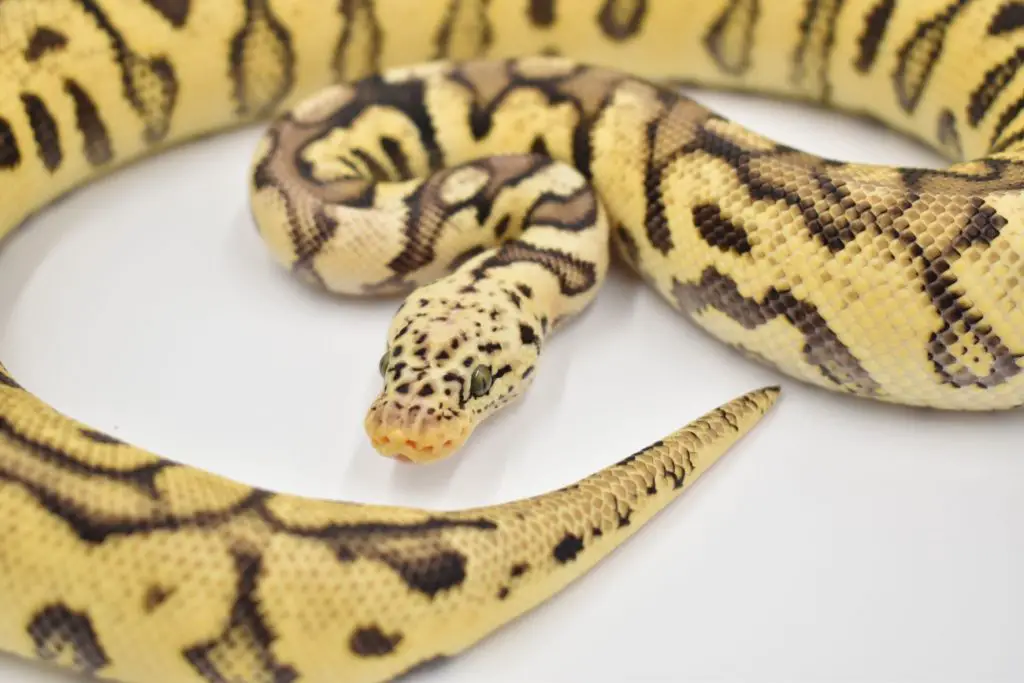
How long can a snake live lost in a house?
Ball Pythons can go an exceptionally long time without food, certainly over a year. They can also go at least a month without water.
If they find just a few drops of condensation on something, then they can last much, much longer. The immediate danger to your snake through dehydration is quite low, and through starvation extremely low.
This is another reason I said not to panic. If you keep looking, and make sure you have checked everywhere, you have a very high chance of finding your snake before any real harm comes to it.
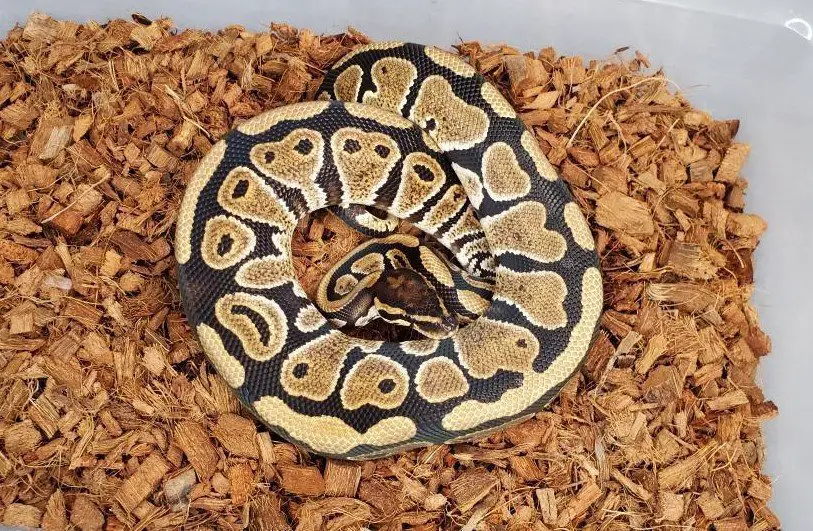
The bottom line
Your Ball Python might have escaped – but all is not lost! You need to get into your pet’s head.
Think, where would he after leaving his enclosure? What’s the first snug, safe place to hide? If that one’s empty, what’s the next closest one?
Being calm and methodical like this is the way to go. After all, that’s how the snakes behave. By trying to imagine what choices they would make at each step you will have the greatest chance of finding them.
Also on this topic:
For more on enclosures:
Back to the enclosure guidelines page
